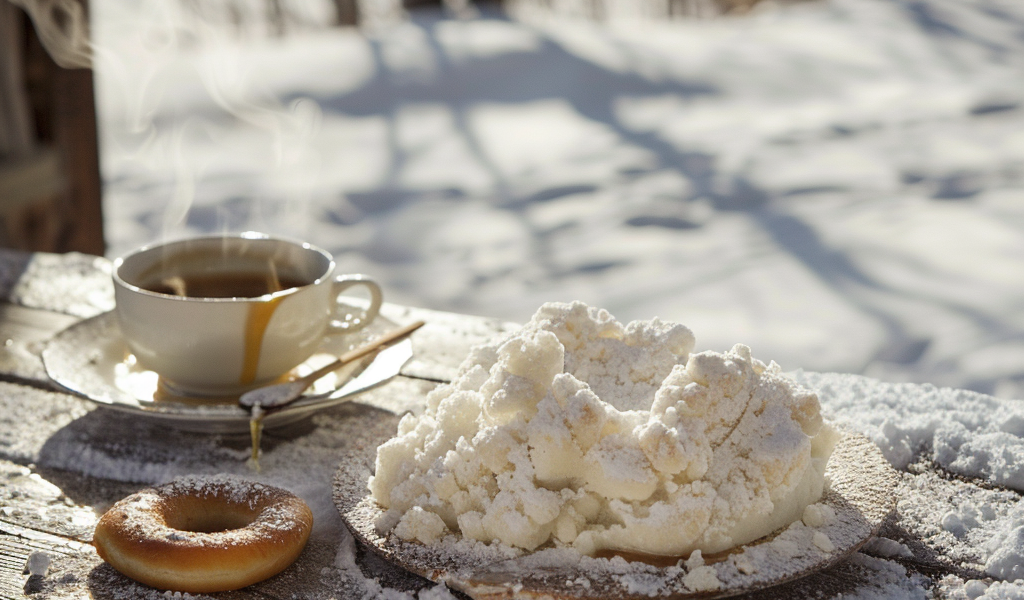The arrival of spring brings a wave of excitement, particularly in Vermont, where the transition from winter to warmer days is celebrated with a unique culinary tradition: sugar-on-snow. This delightful treat is a cherished part of Vermont’s culture, marking the beginning of the maple syrup season.
As temperatures begin to fluctuate between day and night, the sap in maple trees starts to flow, creating the perfect conditions for tapping. While many look forward to the return of blooming flowers and longer days, Vermonters eagerly anticipate the opportunity to indulge in sugar-on-snow.
So, what exactly is sugar-on-snow? This traditional dish consists of freshly collected, powdery snow topped with hot, heated maple syrup, which is brought to a temperature of 235 degrees Fahrenheit. The result is a sweet, sticky combination that many enjoy by rolling it onto a popsicle stick, much like a frozen treat. In the absence of a stick, a fork serves just as well!
The appeal of sugar-on-snow lies in its contrasting temperatures and textures. The warmth of the syrup juxtaposed with the coldness of the snow creates a satisfying experience for the palate. However, this unique dish does not stop at just syrup and snow. A typical sugar-on-snow meal also includes a dill pickle, a plain doughnut, and a cup of coffee, offering a range of flavors and sensations in one sitting.
While Vermonters are passionate about this unconventional combination, opinions on its taste can vary significantly. Locals often defend the dish with fervor, while those unfamiliar with it may be more hesitant to embrace the unusual pairing of sweet and savory. However, for those who are adventurous enough to try it, the experience might just be surprisingly delightful.
Despite its popularity, some individuals express concerns about the safety of consuming snow, particularly for those outside of New England or Canada, where sugar-on-snow is also enjoyed. Questions arise regarding the cleanliness of the snow and whether it is safe to eat. The answer, however, is nuanced.
It is crucial to ensure that the snow used for this treat is fresh and has not touched the ground, as snow that has made contact with the surface can harbor bacteria and other contaminants. To enjoy sugar-on-snow safely, it is advisable to collect snow in clean containers, allowing it to fall directly from the sky without any ground contact.
Experts have pointed out that, while fresh snow may seem safe, it can still be contaminated by pollutants in the atmosphere as it falls. This is particularly relevant in urban areas, where smog and other airborne particles can affect snow quality. However, the quantities of potential contaminants ingested from snow are likely minimal, especially when compared to the various substances we consume in our daily diets, such as microplastics and pesticides.
Despite these concerns, many Vermonters continue to enjoy sugar-on-snow without hesitation, celebrating the arrival of spring with this beloved local delicacy. The tradition not only serves as a delightful treat but also as a way to connect with the changing seasons and the natural beauty of Vermont.
As the maple syrup season unfolds, the excitement surrounding sugar-on-snow continues to grow. This unique culinary experience encapsulates the spirit of Vermont, showcasing the region’s rich traditions and the joy of enjoying seasonal delights.





